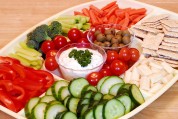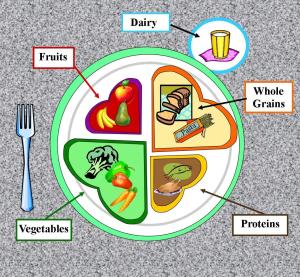Over the month of February, known as Heart Month, you may have heard a lot about the importance of having a healthy heart. We want to offer some quick tips and access to websites and a book designed to help you improve not only your heart health, but your overall health as well.
Heart disease remains the number one cause of death for both men and women. Go Red for Women is an American Heart Association’s (AHA) platform presented to improve health. AHA’s website is an excellent source of valuable information: https://www.goredforwomen.org/
Make 2020 your year to live a healthier life for your heart’s sake.
Develop A Personalized Plan
To improve your health and outlook on life, make a commitment to eat healthy and find an exercise that works for you, one you can do daily. Get plenty of sleep, limit your alcohol intake, choose happy active friends, and find activities you enjoy.
Move More
A 30-minute walk each day with six minutes of cardio-exercise will increase your endurance to enjoy all activities and prolong your life. https://www.nytimes.com/2020/02/18/well/move/in-6-minutes-you-can-be-done-with-your-workout.html
Eat Healthy and Less
The Mediterranean diet has proven to help people lose weight, keep it off, plus reduce their chance of having a heart attack, stroke, or developing type 2 diabetes. It is a healthful approach to eating for men and women for all ages.
A Mediterranean diet consists of fish and seafood, poultry, eggs, low-fat dairy like yogurt,  vegetables, fruits, whole grains, beans, nuts and seeds, and olive oil. For a sample meal plan and beginner’s guide to the Mediterranean diet, check out this website: https://www.healthline.com/nutrition/mediterranean-diet-meal-plan
vegetables, fruits, whole grains, beans, nuts and seeds, and olive oil. For a sample meal plan and beginner’s guide to the Mediterranean diet, check out this website: https://www.healthline.com/nutrition/mediterranean-diet-meal-plan
Mediterranean 5:2 Diet
In 2012, weight expert, Dr. Michael Mosley introduced the Mediterranean 5:2 diet – an eating plan where you reduce your calorie intake to 800 or fewer calories two days a week. It is best to split those days, say Monday and Thursday. Splitting the days helps you maintain an even metabolic rate while dieting. On the other “regular” five days, you eat a diet consisting of fish, poultry, dairy, vegetables, fruits, whole grains, beans, nuts and seeds, and olive oil – a healthy Mediterranean Diet.
Calculate Your Calorie Needs
Below is a website that will help you calculate how many calories you need per day to reach your desired weight.
https://www.healthline.com/nutrition/how-many-calories-per-day
Handbook on Heart Health
 For more in-depth information about heart health, Dr. Betty Kuffel, MD, Fellow of theAmerican College of Physicians, has published Your Heart, Prevent and Reverse Heart Disease in Men, Women and Children. This handbook is available for purchase on Amazon.
For more in-depth information about heart health, Dr. Betty Kuffel, MD, Fellow of theAmerican College of Physicians, has published Your Heart, Prevent and Reverse Heart Disease in Men, Women and Children. This handbook is available for purchase on Amazon.
https://www.amazon.com/Betty-Kuffel/e/B07XFQPLFX
Challenge yourself
Start your customized program today. Adopt healthier eating and exercise habits that will pay dividends in 2020 and beyond. If you are on medications or have health risks, be sure to discuss diet and exercise with your health practitioner. Your heart and body will thank you.
Betty Kuffel, MD and Bev Erickson



 To reduce calories simply eat small meals for two days of each week. Over the other five days only eat vegetables, fruits, nuts, seeds, legumes (beans, chickpeas lentils), potatoes, whole grains, breads, herbs, spices, fish, seafood, poultry, eggs, cheese and yogurt. Use only extra virgin olive oil when cooking and rarely, if ever, eat red meat.
To reduce calories simply eat small meals for two days of each week. Over the other five days only eat vegetables, fruits, nuts, seeds, legumes (beans, chickpeas lentils), potatoes, whole grains, breads, herbs, spices, fish, seafood, poultry, eggs, cheese and yogurt. Use only extra virgin olive oil when cooking and rarely, if ever, eat red meat.
 also loved her pumpkin pie. As kids, we preferred Mom’s apple pie and gagged at the thought of eating pumpkin. However, one day, she surprised us with a chiffon pumpkin pie. One bite and we were smitten by its delicate flavor. She had changed our minds and broadened our dietary horizons. We learned pumpkin really was edible.
also loved her pumpkin pie. As kids, we preferred Mom’s apple pie and gagged at the thought of eating pumpkin. However, one day, she surprised us with a chiffon pumpkin pie. One bite and we were smitten by its delicate flavor. She had changed our minds and broadened our dietary horizons. We learned pumpkin really was edible.


 calorie burn. — And, with exercise, you are unlikely to stimulate a starvation response. In fact, with a marked reduction in calorie intake and consistent exercise, you will lose weight.
calorie burn. — And, with exercise, you are unlikely to stimulate a starvation response. In fact, with a marked reduction in calorie intake and consistent exercise, you will lose weight.



